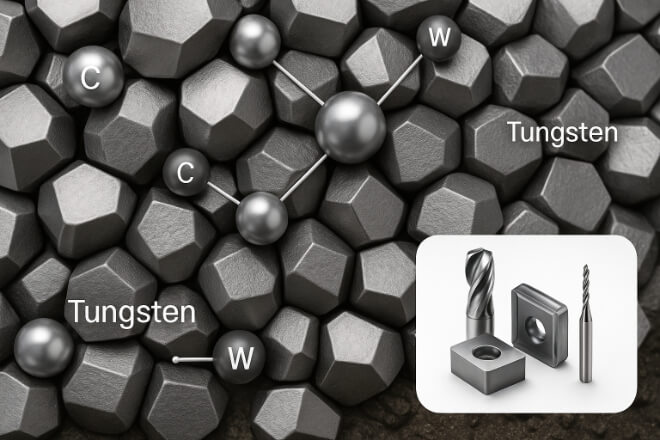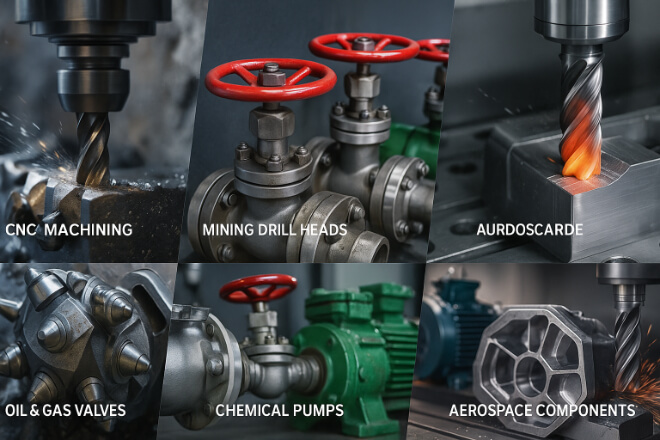현대 제조업에서는 채광, 석유와 가스, 그리고 다른 중공업, 도구 및 부품은 극한의 작업 조건에 직면해 있습니다.
그들은 단단하거나 연마성이 있거나 뜨거운 재료를 절단, 드릴링, 성형 또는 분쇄해야 합니다. 공구가 너무 빨리 마모되면 생산이 중단되고 비용이 증가하며 품질이 저하됩니다.
텅스텐 카바이드는 뛰어난 성능을 제공하기 때문에 이러한 산업 분야에서 가장 신뢰받는 소재 중 하나입니다. 내마모성, 내열성, 내식성이 뛰어납니다.
이 기사에서는 텅스텐 카바이드가 혹독한 환경에서도 뛰어난 성능을 보이는 이유, 재료 수준에서의 작동 원리, 그리고 업계 의사결정권자들이 도구와 마모 부품에 텅스텐 카바이드를 선택하는 이유를 설명합니다.
텅스텐 카바이드의 내마모성
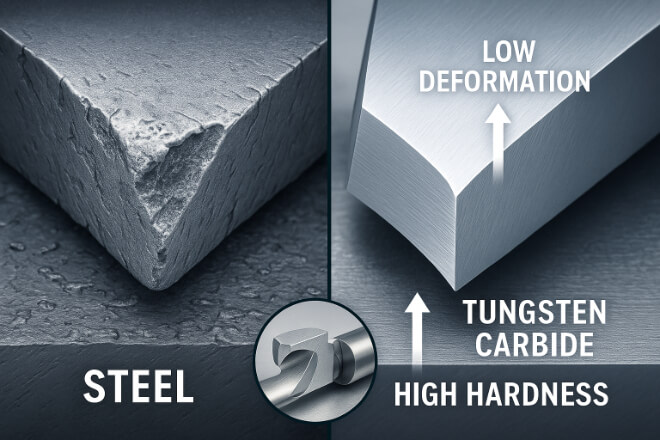
마모는 마찰, 마모 또는 다른 표면과의 접촉으로 인해 재료가 점진적으로 손실되는 현상입니다.
기계 가공, 광업, 석유 시추와 같은 산업에서 마모는 공구 고장의 주요 원인 중 하나입니다.
텅스텐 카바이드는 다음과 같은 이유로 마모에 강합니다.
높은 경도 – 비커스 경도 척도에서 텅스텐 카바이드는 강철보다 훨씬 단단하기 때문에 연마 입자가 쉽게 긁을 수 없습니다.
강력한 미세 구조 - 텅스텐 카바이드 입자가 단단히 결합되어 재료 손실로 이어질 수 있는 미세 균열이 줄어듭니다.
낮은 플라스틱 변형률 – 압력 하에서도 모양이 쉽게 변하지 않으므로 날카로움이 오랫동안 유지됩니다.
예: A 텅스텐 카바이드 엔드밀 강화된 강철을 절단하면 고속 강철 공구보다 수명이 몇 배나 길어져 가동 중단 시간과 공구 교체 비용이 줄어듭니다.
텅스텐 카바이드가 고열을 처리하는 방법
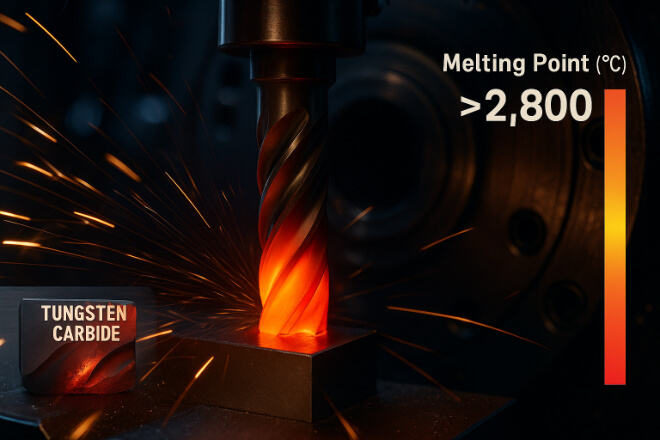
고속 절삭이나 드릴링에서는 마찰로 인해 엄청난 열이 발생합니다.
많은 금속은 고온에서 부드러워지거나 강도를 잃지만, 텅스텐 카바이드는 성능을 유지합니다.
내열성의 이유:
높은 융점 – 텅스텐 카바이드의 융점은 2,800°C(5,072°F) 이상으로 대부분 산업 공정에서 발생하는 열보다 훨씬 높습니다.
열 안정성 – 매우 뜨거운 조건에서도 경도를 유지합니다.
낮은 열팽창 – 온도 변화에 따라 크게 팽창하거나 변형되지 않아 가공 정밀도를 유지하는 데 도움이 됩니다.
예: In 항공우주 부품 가공 시 공구는 모양을 잃지 않고 더 높은 절삭 속도로 작동할 수 있어 생산성이 향상됩니다.
텅스텐 카바이드의 부식 방지 방법
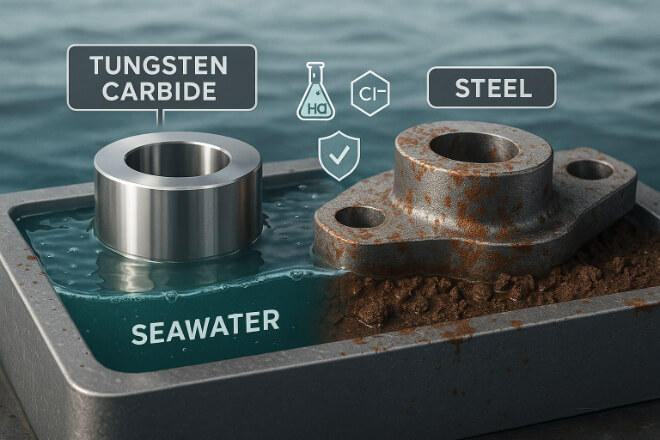
화학 처리와 같은 산업에서는 석유와 가스또는 해양 환경에서는 도구와 부품이 물, 산, 소금 또는 기타 부식성 물질에 노출될 수 있습니다.
텅스텐 카바이드는 다음과 같은 이유로 부식에 강합니다.
화학적 안정성 – 텅스텐과 탄소는 대부분의 화학 물질과 쉽게 반응하지 않는 안정한 화합물을 형성합니다.
보호 바인더 선택 – 코발트 대신 니켈 바인더를 사용하면 산성 또는 염화물이 풍부한 환경에서의 저항성이 향상됩니다.
코팅 – 코팅된 텅스텐 카바이드 공구(예: TiN, TiAlN)는 추가적인 부식 보호 기능을 제공합니다.
예: 해상 굴착 장치에 사용되는 텅스텐 카바이드 밸브 시트는 강철이 빨리 부식되는 염분이 많은 바닷물에서도 수년간 지속될 수 있습니다.
텅스텐 카바이드를 다른 재료와 비교
아래는 텅스텐 카바이드와 다른 일반 공구 재료를 비교한 것입니다.
| 재산 | 텅스텐 카바이드 | 고속도강(HSS) | 도예 |
|---|---|---|---|
| 내마모성 | 훌륭한 | 좋은 | 훌륭한 |
| 내열성 | 훌륭한 | 중간 | 훌륭한 |
| 부식 저항성 | 좋음 ~ 매우 좋음 | 가난한 | 훌륭한 |
| 강인함 | 높은 | 높은 | 낮은 |
| 비용 | 중간-높음 | 낮은 | 높은 |
텅스텐 카바이드로 공구 수명 연장
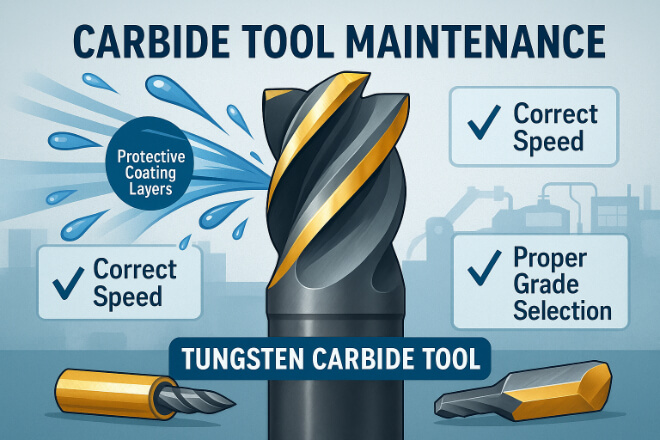
텅스텐 카바이드를 최대한 활용하려면:
적절한 등급을 선택하세요 - 마무리 작업에는 고운 입자를, 무거운 작업에는 거친 입자를 선택하세요.
적절한 코팅을 사용하십시오. TiAlN 또는 DLC 코팅을 적용하여 보호력을 강화하세요.
올바른 속도와 이송을 적용하세요 - 깨짐을 방지하기 위해 공구에 과부하를 주지 마세요.
필요할 때 냉각수를 사용하세요. 고온 작업에서는 냉각수가 공구를 보호하는 데 도움이 됩니다.
의사결정권자들이 텅스텐 카바이드를 선호하는 이유
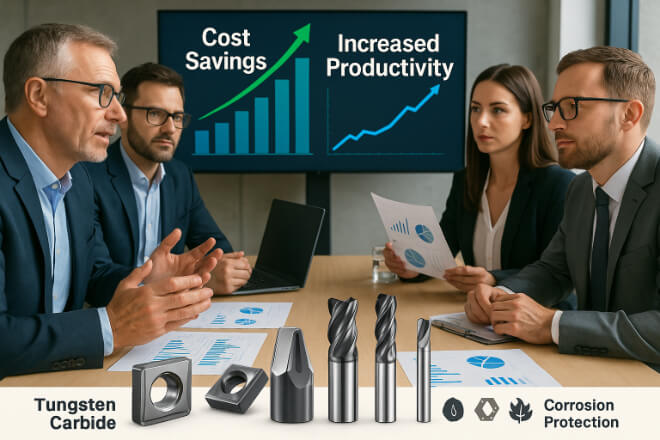
기업 리더와 엔지니어에게 텅스텐 카바이드 도구에 투자하기로 결정하는 것은 가치와 관련이 있습니다.
공구 수명이 길어지면 교체 횟수가 줄어들고 비용도 낮아집니다.
도구를 더 빨리 작동시키고 단단한 재료를 절단할 수 있기 때문에 생산성이 더 높아집니다.
시간이 지나도 일관된 정밀도로 인해 품질이 향상됩니다.
텅스텐 카바이드 공구는 초기 비용이 더 많이 들 수 있지만, 가동 중지 시간을 줄이고 생산량을 늘려 장기적으로 비용을 절감하는 경우가 많습니다.
결론
텅스텐 카바이드는 내마모성, 내열성, 내부식성이 독특하게 결합되어 혹독한 환경에서도 고성능을 요구하는 산업에 최고의 선택이 됩니다.
의사결정권자에게 텅스텐 카바이드에 투자하는 것은 생산의 안정성을 높이고, 유지관리 비용을 낮추며, 장기적으로 더 나은 수익을 얻는 것을 의미합니다.
회사에 대한 자세한 내용을 알고 싶으시면 언제든지 문의해 주세요. 문의하세요.

